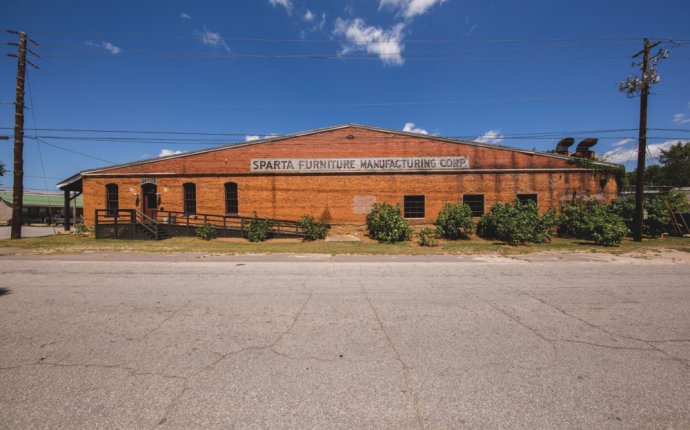
Old Furniture Manufacturing
The Furniture Industry
The Development from 1816 to 1945
by Paul A. Spengler, Our Town Magazine, Jamestown Vol.1 Issue #7
The Economic Development of Jamestown Before 1860
The industrial development of Jamestown before the Civil War depended primarily on two resources, wood and water. In the early nineteenth century, Western New York was heavily forested, with as much as 100, 000 board feet of timber per acre in upland areas like Chautauqua County. Southwestern New York was rich in white pine, hemlock and such valuable northern hardwoods as maple, oak, beech, birch, chestnut, walnut, sycamore and cherry. Southern Chautauqua County was covered with dense pine forests.
The county was also crossed by several creeks which provided water power for early nineteenth century factories. The creeks did not, however, provide a unified system of transportation. Chautauqua County is divided by a large terminal morraine known as “the ridge.” The ridge is 600 to 1, 400 feet in elevation and runs parallel to lake Erie, from three to six miles inland. West of the ridge, Cattaraugus Creek, Canadaway Creek and Walnut Creek flow into Lake Erie, while east of the ridge Lake Chautauqua, the Chadokoin River and Conewango Creek flow into the Allegheny River. Before the coming of the railroad, towns located west of the ridge, like Dunkirk, Fredonia and Westfield, were economically tied to the settlements of northern Ohio and Central New York, while Jamestown was tied to western Pennsylvania and the Ohio valley.
Overland transportation in the early nineteenth century was primitive and expensive. The high cost of transportation made it difficult for Chautauqua County farmers to import manufactured goods and prohibited the exporting of an agricultural surplus. Consequently, most farming in antebellum Chautauqua County was on a subsistence basis, while village industry consisted mainly of small artisan shops serving the needs of local farmers.
Timber was the only resource Chautauqua County possessed that could bear the transportation costs to urban markets. Soft pine woods were cut into boards, piled into rafts and floated down the Allegheny and Ohio Rivers to Pittsburgh and Cincinnati. The hardwoods were burned and their ashes used to make potash. Ten acres of hardwood land yielded up to a ton of potash, worth as much as $200. The potash was shipped to New York and Pittsburgh, where it was used as an ingredient in the manufacture of soap, glass, baking powder and gun powder.
Jamestown’s location on the Chadokoin River, in the heart of the pine country, made it an early center of lumber milling. As early as 1804, Edward Work and Thomas R. Kennedy built a sawmill near Jamestown. In 1809, James Prendergast established the first settlement at “the rapids, ” as Jamestown was then known. He built a sawmill in 1810, and two more by 1816. Other settlers erected additional sawmills, and by 1830 Jamestown was shipping forty million board feet of timber per year, with an annual product value of $250, 000. So many new mills were built during the 1830’s that by 1840 most stands of first class pine timber had been exhausted.
Prendergast encouraged the settlement of skilled New England craftsmen in his village and many of them used their skills to launch manufacturing enterprises. New England artisans founded the village’s first woolen mill and cabinet making shop. Other Yankees founded a scythe snath factory in Jamestown that quickly gained a nation-wide market, and a sash and pail factory that sold its goods as far away as New Orleans.
By the eve of the Civil War, Jamestown had developed a variety of industries. However, most of the village’s business concerns were small establishments that provided for the needs of an agricultural area. Several factories manufactured farm implements such as grain measures, rakes and scythe snaths, while other entrepreneurs operated grist mills, sawmills, blacksmith shops, tanneries, wagon building shops and coopers’ shops. Manufacturing not directly related to agriculture was limited largely to three woolen mills, two cabinet making shops and a chair factory.









